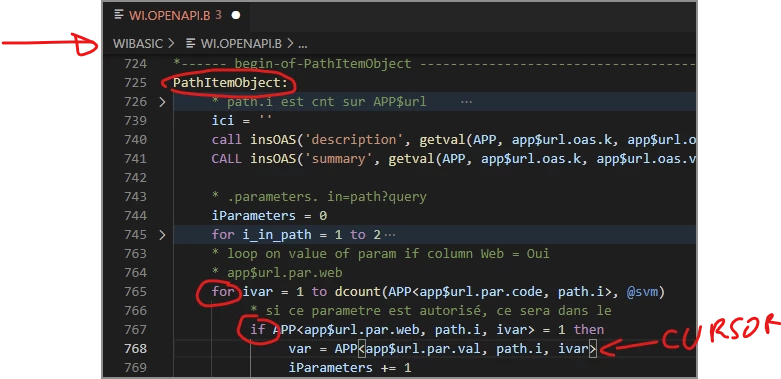I'll introduce a little enhancement suggestion into MVVS display.
Like when I edit a json file, I'll read my current 'in code path' into the header of my file.
here is the sample on a json : the 'in code path' show the complete 'xpath' like of my cursor position.

Applied to BASIC, I'll have : Directoryname > Filename > sectionName > indentLevel > indentLevel > ...

where :
sectionName := the nearest upper Label in sample WIBASIC > WI.OPENAPI.B > PathItemObject:
IndentLevel := the list of nested indent 'word' ... for, if, loop, if with first next word ... in sample WIBASIC > WI.OPENAPI.B > PathItemObject: > for ivar > if APP
When we edit large basic code, a such 'in code path' can be really usefull.
With kind regards
------------------------------
Manu Fernandes
------------------------------






